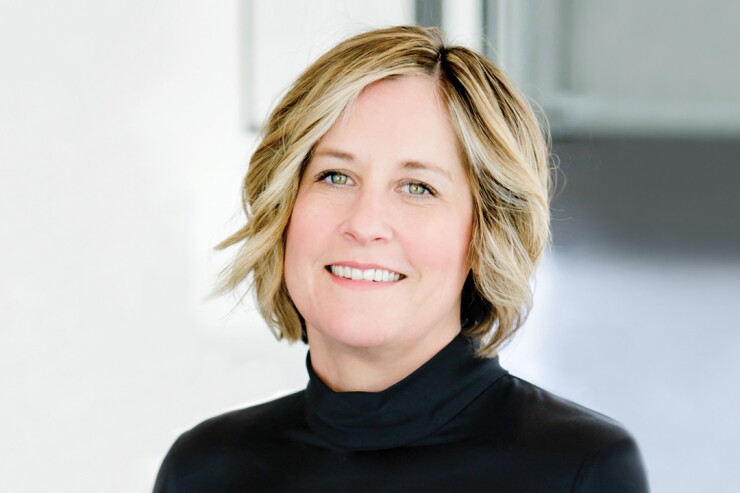
Customers want to do their banking digitally and online as much as possible. Bank of America, which has about 57 million verified digital banking users, has them covered.
But simple transactions are not the only things customers look for from the $3.1 trillion-asset institution, said Holly O'Neill, president of retail banking for BofA. "They also want to know we're committed to the market. We're in the community. We're hiring local folks."
That is one of the factors playing into BofA's decision earlier this year to expand its branch network in 34 markets, including nine new ones, such as Milwaukee, New Orleans and Omaha, Nebraska.
The expansion decisions are driven by the dynamics of each market, O'Neill said. But new branches often follow the introduction of — and growth in — digital banking in a given area. "That has been very successful," she said.
O'Neill has worked at BofA since 1996, starting as a credit analyst in its corporate and investment bank. She took the reins of the bank's retail banking unit in 2021. Under her leadership, BofA added 2.6 million new retail clients in 2022, up 15% year over year. The bank also added 1.3 million new credit card accounts, while retail client balances surpassed $1 trillion.
O'Neill sees the branch expansion as being in line with BofA's ongoing strategy. "We're expanding in certain markets and consolidating in others because the pattern of behaviors of customers has shifted," she said.
While customers are moving basic transactions to digital and online platforms, they are seeking out branches for financial advice, she said. Given the shift in branch usage, there is a need for other changes. As a result, BofA is renovating its existing branches under an initiative slated to wrap up at the end of this year. The renovations are designed to emphasize financial advising but also offer a welcoming experience, O'Neill said.
The bank's new and redesigned branches include private offices, less space for teller lines and a lobby area where staff can greet clients, said O'Neill. "That lobby engagement is really critical to our redesign."
Designing a branch is only part of the challenge. Given the competitive labor market and low unemployment rate, staffing has been another headache for banks of all sizes. To keep its pipeline full, BofA has invested in employee development and in tools and resources that help them do their jobs, said O'Neill.
For example, the bank has introduced virtual-reality training to immerse branch employees in real-life scenarios, O'Neill says.
Innovations on the benefits side also factor into making BofA a competitive employer. The bank recently introduced a sabbatical program, for example, that allows employees with at least 15 years of tenure to take a paid, four-week break from work.
"Our recruiting is strong and stable, and I think we are able to attract and hire really talented people," she said.
O'Neill's overarching goal is for the bank's 68 million retail customers to feel like they have a personal relationship with the bank. There may be 68 million definitions of what that looks like. "For me, if I'm putting myself in the client's shoes, it means for every client, I want to make sure that we are supporting their financial health," she said. "That is the core for how we're going to support clients and how we're going to grow the business."
BofA has distilled financial health into five broad categories: simplify your finances, manage your money, leverage experts, build knowledge and get help when you need it.
To gauge the impact of its efforts, the bank looks at several measurements, such as savings balances, O'Neill said. The bank also counts it as progress when a client starts with a secured credit card and graduates to an unsecured one.
BofA also takes pride in external measures. In 2022, the bank was the first to be certified by J.D. Power for customer satisfaction with financial health support. The bank was certified again in 2023. On the digital side, BofA snagged a top ranking from Javelin for its online and mobile banking functionality, as well as a nod from Global Finance Magazine as the best consumer digital bank in the U.S.
Record inflation has tested the financial health of many Americans over the last year. The data at BofA suggests consumers generally remain in a good position across all income brackets, O'Neill said, noting that spending growth was particularly strong in July.
However, housing affordability has been a concern across the board in the U.S, particularly for people at the lower end of the income spectrum.
To assist households with low to moderate income, O'Neill's team is committed to disbursing $15 billion through what it calls its Community Homeownership Commitment. Through the end of last year, BofA had provided nearly $10.3 billion in loans and $382 million in grants, assisting 39,000 families.
"The current mortgage market, I would say, is relatively muted because of the rate environment. As rates go up, the demand for mortgages is down," O'Neill said. "But we continue to see demand in this program."
O'Neill also oversaw BofA's decision last year to eliminate fees for nonsufficient funds and to reduce overdraft fees. In the first three months after the changes took effect in May 2022, overdraft-fee revenue dropped more than 90%.
Internally, O'Neill has been a leader in BofA's diversity efforts. She is the co-executive sponsor of the Massachusetts LGBTQ+ pride employee network and chair of the BofA disability action network.





